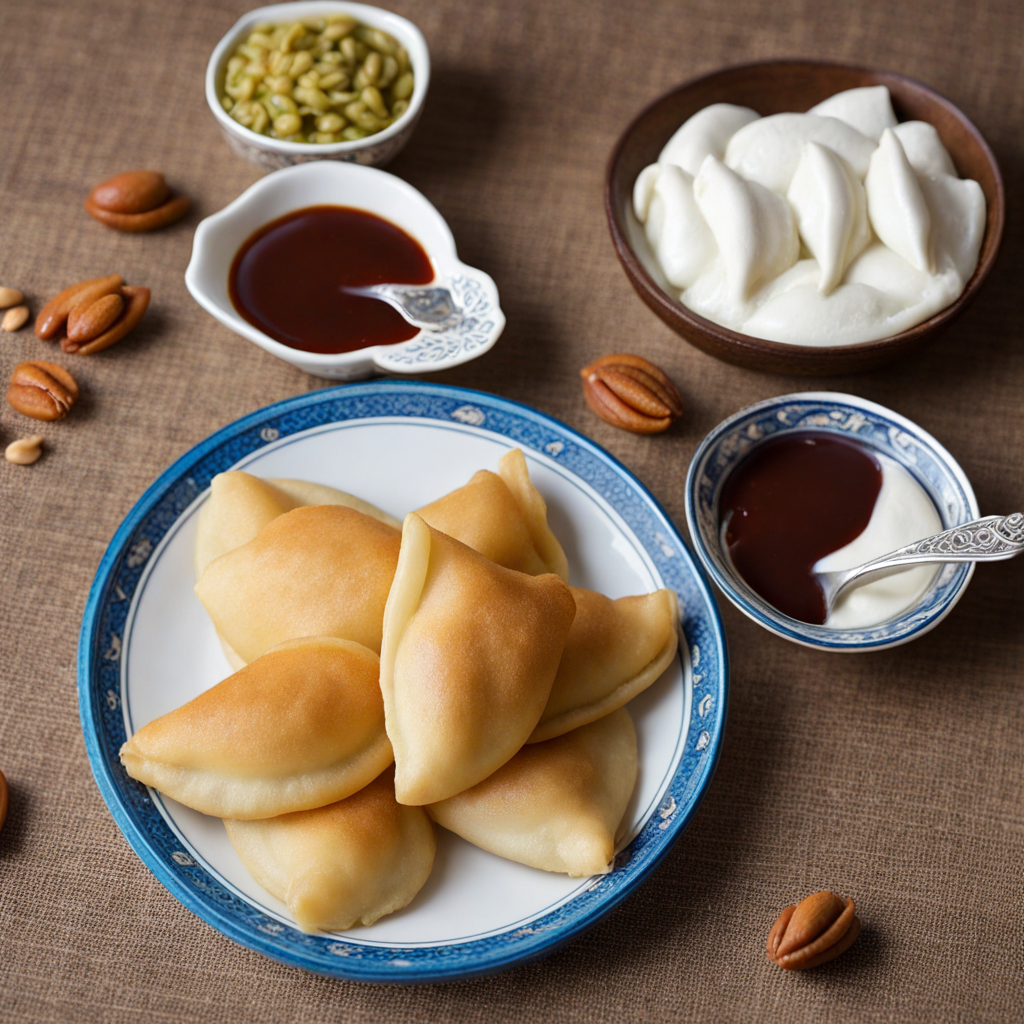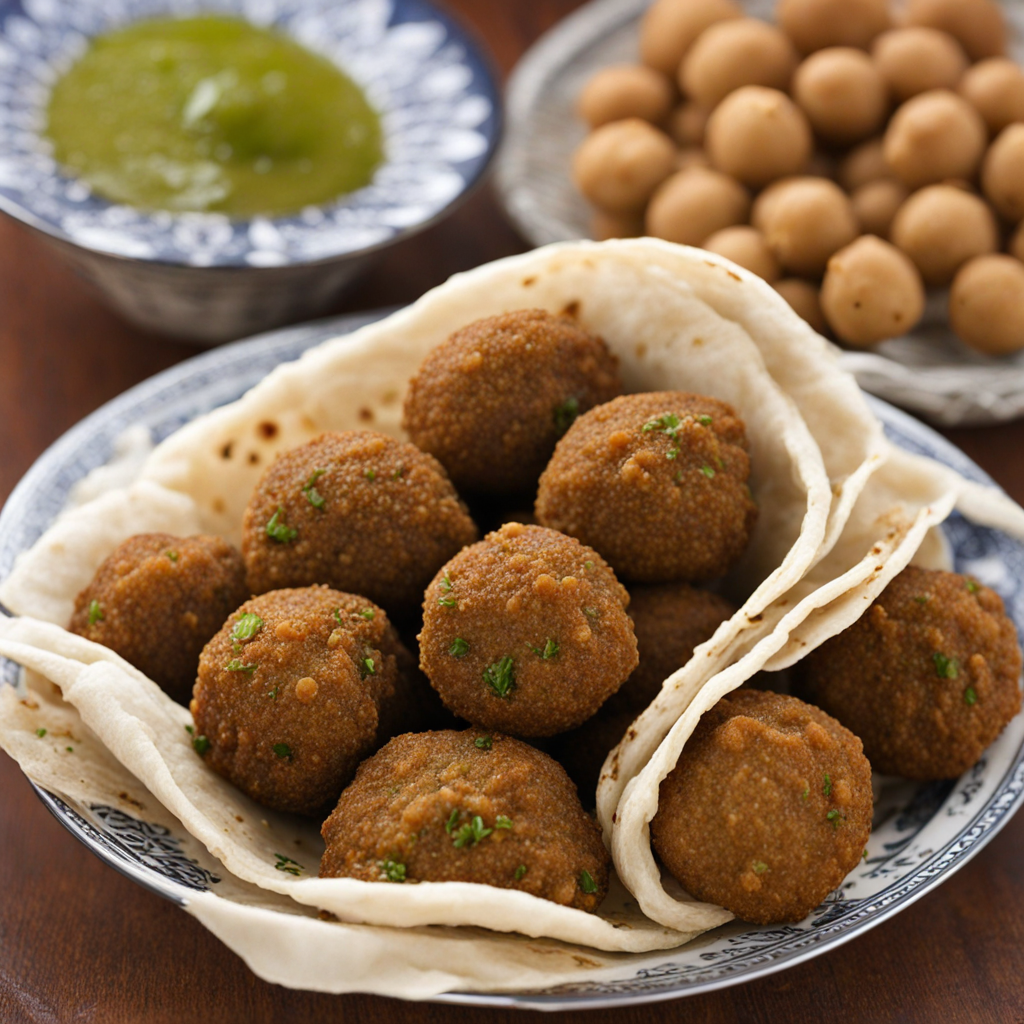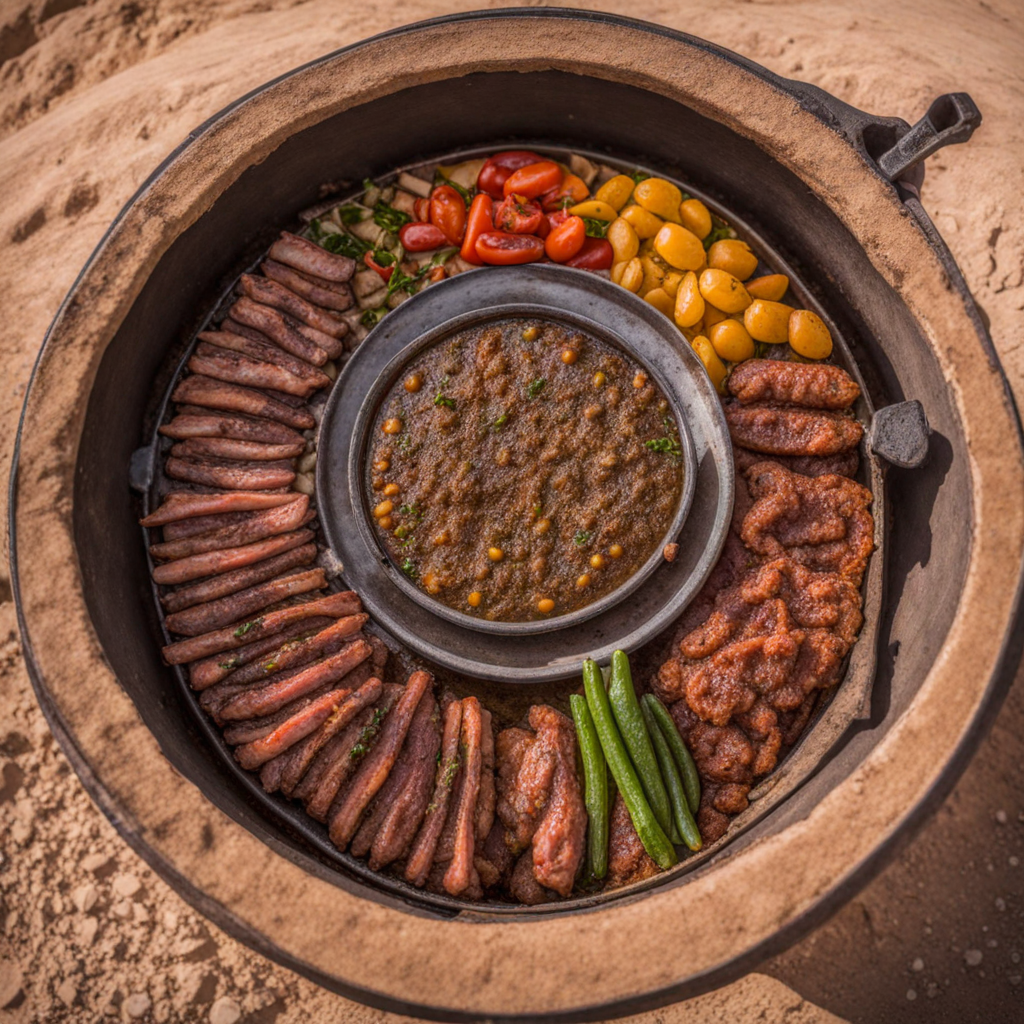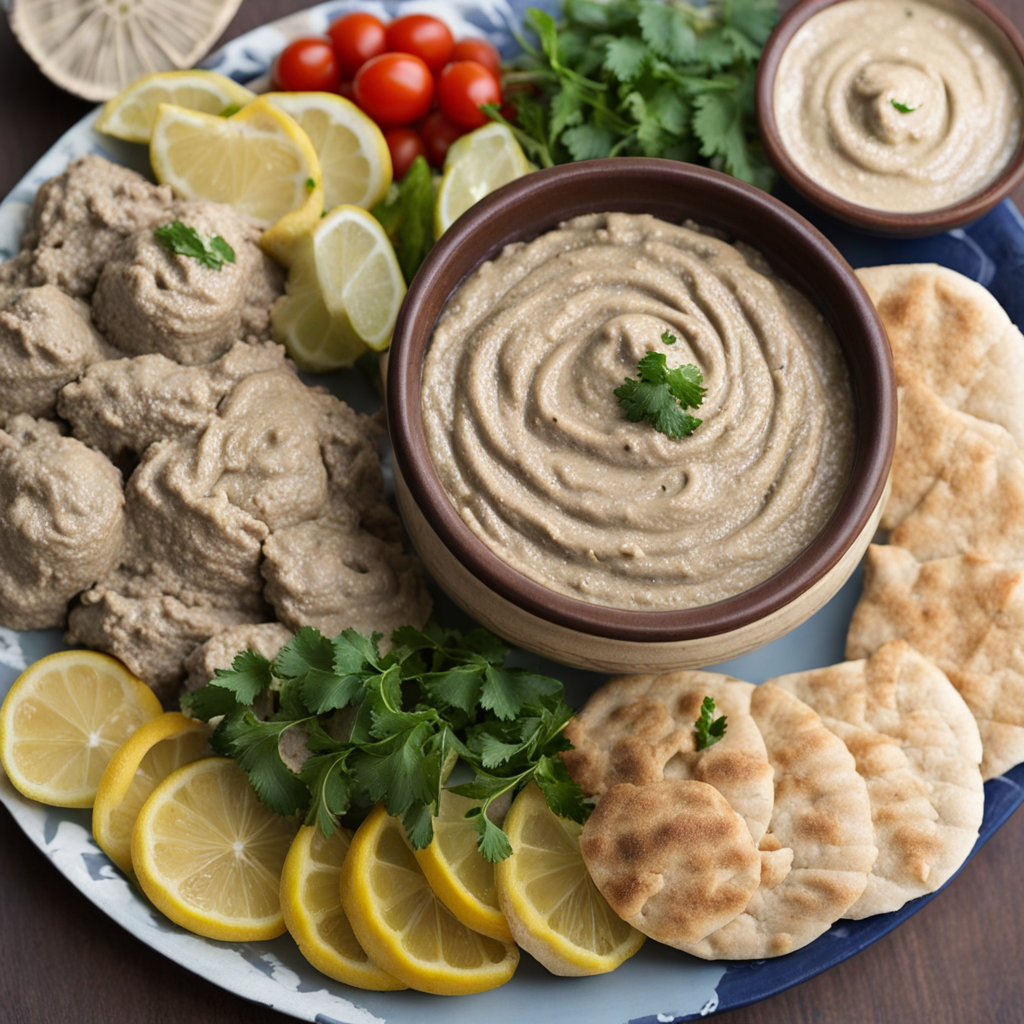Qatayef
قطايف, known as qatayef, is a beloved traditional sweet treat in Jordan and throughout the Levant region, particularly during the holy month of Ramadan. This delightful dessert can be described as a stuffed pancake, often filled with a variety of sweet fillings, and is typically enjoyed during iftar, the meal that breaks the fast. The history of qatayef dates back to the Abbasid period, where it was served at festive occasions. Over centuries, it has evolved into a staple dessert, symbolizing celebration and communal gatherings. The flavor profile of qatayef is as rich and diverse as its fillings. The base pancake is mildly sweet and slightly spongy, providing a perfect canvas for the array of fillings. Common fillings include a mixture of sweetened cheese, nuts like walnuts or pistachios, and a rich blend of cinnamon and sugar. In some variations, cream or clotted cream (ashta) is used, adding a decadent richness to the dish. Once stuffed, the qatayef can be either folded into half-moon shapes or rolled, and they are often drizzled with syrup or honey before serving, enhancing their sweetness and giving them a glossy appearance. The combination of flavors—from the nutty crunch of the fillings to the sweet syrup—creates an indulgent experience that is both comforting and satisfying. Preparation of qatayef is a labor of love that involves several steps. To make the batter, flour, yeast, sugar, and water are combined,
How It Became This Dish
Origins of قطايف قطايف (Qatayef) is a beloved traditional dessert that has its roots in the Middle East, particularly in the Levant region, which includes Jordan, Syria, Lebanon, and Palestine. Its origins can be traced back to the Umayyad dynasty in the 8th century, where it is believed that the dish was created to celebrate religious occasions and festivals. The pastry was originally prepared as a simple stuffed pancake, which was filled with various sweet fillings and then folded into a half-moon shape. The name "قطايف" itself is derived from the Arabic word "قَطَفَ" (qatafa), meaning "to gather" or "to pick," which reflects the way the dessert is assembled and enjoyed. Historically, Qatayef was often served during the month of Ramadan, a time when families come together to break their fast. The dish symbolizes the joy of gathering, sharing, and celebrating with loved ones, making it an integral part of festive occasions. \n\n Cultural Significance In Jordan and across the Levant, قطايف is more than just a dessert; it is a cultural emblem that signifies hospitality and abundance. During Ramadan, it is customary for families to prepare large quantities of Qatayef to share with neighbors and friends, fostering a sense of community and unity. The dish is often served at iftar, the meal that breaks the fast at sunset, and its preparation becomes a communal activity, drawing families together in the kitchen. Qatayef has also found its place in various social and religious celebrations beyond Ramadan. Weddings, Eid celebrations, and family gatherings often feature this delightful treat, underscoring its importance in the cultural fabric of Jordanian society. As a result, the dish has transcended its initial purpose as a seasonal delicacy, becoming a year-round favorite enjoyed by people of all ages. \n\n Ingredients and Variations Traditionally, قطايف is made from a simple batter consisting of flour, water, and yeast, which is cooked on a griddle to create thin pancakes. The filling options are diverse, with common choices including sweetened cheese, nuts, or a mixture of both. After being filled, the pancakes are folded and often deep-fried or baked, and then drizzled with syrup or dusted with powdered sugar before serving. In Jordan, variations of قطايف can be found, reflecting regional tastes and preferences. For instance, some people opt for a more decadent approach by adding ingredients such as chocolate or coconut to the fillings. The creativity in fillings and presentations showcases the adaptability of Qatayef, allowing it to evolve over time while retaining its traditional essence. \n\n Evolution Through Time Throughout the centuries, قطايف has evolved in both its preparation and presentation. In the early days, it was primarily a homemade treat prepared by families, but as urbanization increased in the 20th century, Qatayef began to be sold in local markets and by street vendors. This shift brought about a greater variety of styles and serving methods, catering to the tastes of a broader audience. With the advent of modern technology and the globalization of food culture, Qatayef has also seen changes in its preparation. Some contemporary variations include using premade pancake mixes or adapting the fillings to include international flavors, such as fruit compotes or ice cream. This evolution reflects the dynamic nature of culinary traditions, as they adapt to the modern palate while still honoring their historical roots. \n\n Qatayef in Contemporary Jordan Today, قطايف remains a staple in Jordanian cuisine, particularly during Ramadan, where it is one of the most anticipated dishes. Local bakeries and sweet shops offer ready-made Qatayef, making it easily accessible for those who may not have the time or resources to prepare it at home. However, many families still cherish the tradition of making Qatayef together, passing down recipes and techniques from generation to generation. In recent years, there has been a resurgence of interest in traditional foods, with many younger Jordanians seeking to reconnect with their culinary heritage. This movement has led to workshops and cooking classes focused on traditional dishes, including قطايف, where participants learn about its history and significance while honing their cooking skills. \n\n Global Presence As Jordanian communities have spread across the globe, قطايف has also made its way to international food markets. Middle Eastern restaurants and dessert shops in various countries feature Qatayef on their menus, introducing this delightful treat to new audiences. The dish serves as a culinary ambassador, showcasing the rich flavors and cultural significance of Jordanian cuisine to a wider population. In the diaspora, Qatayef has become a symbol of nostalgia for many expatriates, reminding them of home and the traditions they hold dear. The act of preparing and sharing Qatayef can evoke memories of family gatherings and celebrations, reinforcing the connection to their heritage, despite being far from their homeland. \n\n Conclusion قطايف is much more than a sweet treat; it is a symbol of Jordanian culture, community, and tradition. Its rich history, cultural significance, and ability to adapt over time demonstrate the resilience and vibrancy of culinary practices in the Levant. As it continues to be enjoyed by new generations, قطايف will undoubtedly remain a cherished part of Jordan's gastronomic landscape, celebrating the joy of sharing and the warmth of family and friendship.
You may like
Discover local flavors from Jordan







